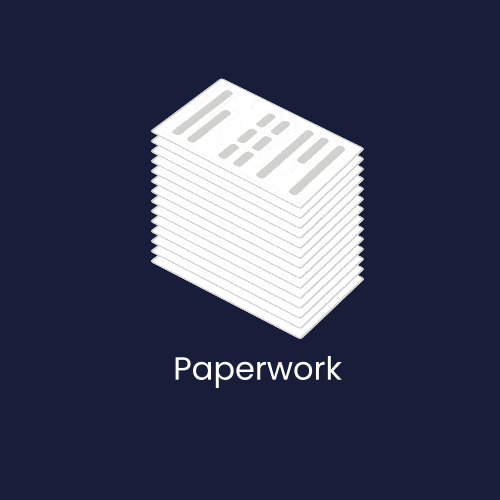The last mile of delivery is often the most critical and complex part of the logistics process. As the demand for faster, more reliable deliveries grows, managing proof of delivery (POD) in real time has become a key differentiator for businesses aiming to offer exceptional customer experiences. Real-time POD not only enhances customer satisfaction but also addresses common issues like billing disputes, settlement delays, and inaccurate tracking of goods, making it essential for both B2B and B2C logistics.
In this blog, we explore the challenges in last mile delivery, the significance of real-time proof of delivery, and how leveraging advanced last mile SaaS platforms can revolutionize logistics operations.
What are the Challenges in Last Mile Delivery
The last mile delivery process—where goods are delivered from a transportation hub to the final destination—faces several hurdles that impact both operational efficiency and customer satisfaction:
⦁ Inconsistent Proof of Delivery:
Inaccurate or missing POD can lead to disputes over delivery status, particularly in cases of lost or damaged goods. This is especially problematic for high-value deliveries or industries requiring precise tracking, such as pharmaceuticals or retail.
⦁ Delayed Billing and Settlements:
Without timely proof of delivery, the billing process is often delayed, leading to cash flow issues and operational inefficiencies. Real-time POD can expedite these processes by confirming deliveries as soon as they occur.
⦁ Lack of Transparency and Visibility:
Customers and businesses alike expect real-time updates on the status of their deliveries. Without an efficient system in place, providing accurate tracking and delivery confirmation becomes difficult, reducing customer trust.
⦁ Manual Errors:
In many logistics operations, proof of delivery is still managed using paper-based systems. This can lead to errors, delays, and even loss of important documents, further complicating the billing and settlement processes.
Why Real-Time Proof of Delivery Matters
Real-time proof of delivery (POD) is a critical component in ensuring smooth logistics operations and delivering a superior customer experience. Here’s why it has become so significant:
⦁ Enhanced Customer Experience
In both B2B and B2C segments, customers demand instant notifications and transparency throughout the delivery process. With real-time proof of delivery, businesses can provide immediate confirmation upon delivery completion, often with electronic signatures, photos, or QR codes. This enhances trust, reduces the risk of disputes, and boosts overall customer satisfaction.
⦁ Operational Accuracy and Accountability
Real-time POD eliminates manual errors and ensures that every delivery is documented accurately. Whether it’s capturing a recipient’s signature or documenting the condition of goods upon arrival, digital POD provides an indisputable record, minimizing the risk of disputes and costly delays.
⦁ Streamlined Billing and Settlements
For B2B businesses, especially those dealing with large volumes of transactions, real-time proof of delivery accelerates the billing and settlement processes. The moment a delivery is confirmed, it triggers automatic invoicing and settlement workflows, reducing the need for manual intervention and eliminating bottlenecks in revenue collection.
⦁ Increased Operational Efficiency
Real-time POD provides logistics teams with full visibility over delivery operations. This allows them to quickly identify and resolve issues such as missed or delayed deliveries, ensuring that operations run smoothly and efficiently. The integration of POD with last mile TMS software also provides valuable data that can be used for performance monitoring and optimization.
Impact of Real-Time Proof of Delivery for B2B and B2C Segments
Real-time proof of delivery (POD) has transformed both B2B and B2C logistics by providing instant confirmation and transparency. For B2B, it ensures seamless operations with reduced disputes and faster billing, while in B2C, it meets consumer expectations for real-time updates and reliable deliveries. Across both segments, real-time POD enhances efficiency and customer satisfaction.
B2B Benefits
In the B2B logistics space, where multiple stakeholders are involved in the supply chain, real-time POD ensures transparency and accountability at every stage. It allows companies to:
⦁ Track the movement of goods with precision.
⦁ Reduce disputes over delivery accuracy or condition.
⦁ Expedite billing cycles by confirming deliveries instantly.
⦁ Improve relationships with clients by providing a seamless delivery experience.
B2C Benefits
For B2C logistics, real-time proof of delivery is essential to meet the growing expectations of tech-savvy consumers. Whether it’s a same-day delivery or a scheduled drop-off, real-time POD:
⦁ Provides customers with real-time updates and delivery confirmation.
⦁ Reduces customer inquiries about delivery status.
⦁ Builds trust and reduces the anxiety often associated with online shopping.
⦁ Increases transparency by providing evidence of delivery, including signatures and photos.
Leveraging Last Mile SaaS Platforms for Real-Time Proof of Delivery
Advanced last mile SaaS platforms are transforming the way businesses manage proof of delivery. These platforms integrate seamlessly with existing logistics operations, offering a suite of tools that enhance real-time visibility, operational efficiency, and customer satisfaction.
Here’s how they do it:
1. Mobile POD Solutions
Delivery agents can use mobile devices to capture electronic signatures, photos, and barcodes at the point of delivery. This data is instantly uploaded to the cloud, giving businesses and customers real-time access to proof of delivery. This reduces paperwork and minimizes the risk of errors.
2. AI and Predictive Analytics
Modern last mile SaaS platforms often include AI-powered route optimization and predictive analytics tools that anticipate delivery issues before they happen. These insights allow businesses to communicate proactively with customers, preventing delays and improving overall satisfaction.
3. Integration with ERP and Billing Systems
Seamless integration with ERP systems ensures that once a delivery is confirmed, billing and invoicing processes are triggered automatically. This not only speeds up the settlement process but also improves cash flow and reduces the risk of delayed payments.
About nuVizz
nuVizz is a market leader in providing innovative Last Mile TMS solutions that enable real-time visibility and proof of delivery, empowering businesses to enhance their operational efficiency and customer satisfaction. nuVizz’s cutting-edge technology offers seamless integration of route optimization, automated billing, and real-time tracking, making it the ideal choice for shippers and carriers looking to excel in the logistics industry.
Conclusion
Real-time proof of delivery is more than just a logistical necessity—it’s a strategic advantage for businesses looking to thrive in the competitive world of last mile delivery. By embracing cutting-edge last mile SaaS platforms, companies can improve transparency, reduce operational inefficiencies, and provide their customers with a superior delivery experience.
As the logistics industry continues to evolve, real-time POD will play an increasingly important role in driving customer satisfaction, operational excellence, and revenue growth. Businesses that invest in advanced last mile solutions will be well-positioned to lead in this rapidly changing landscape.

